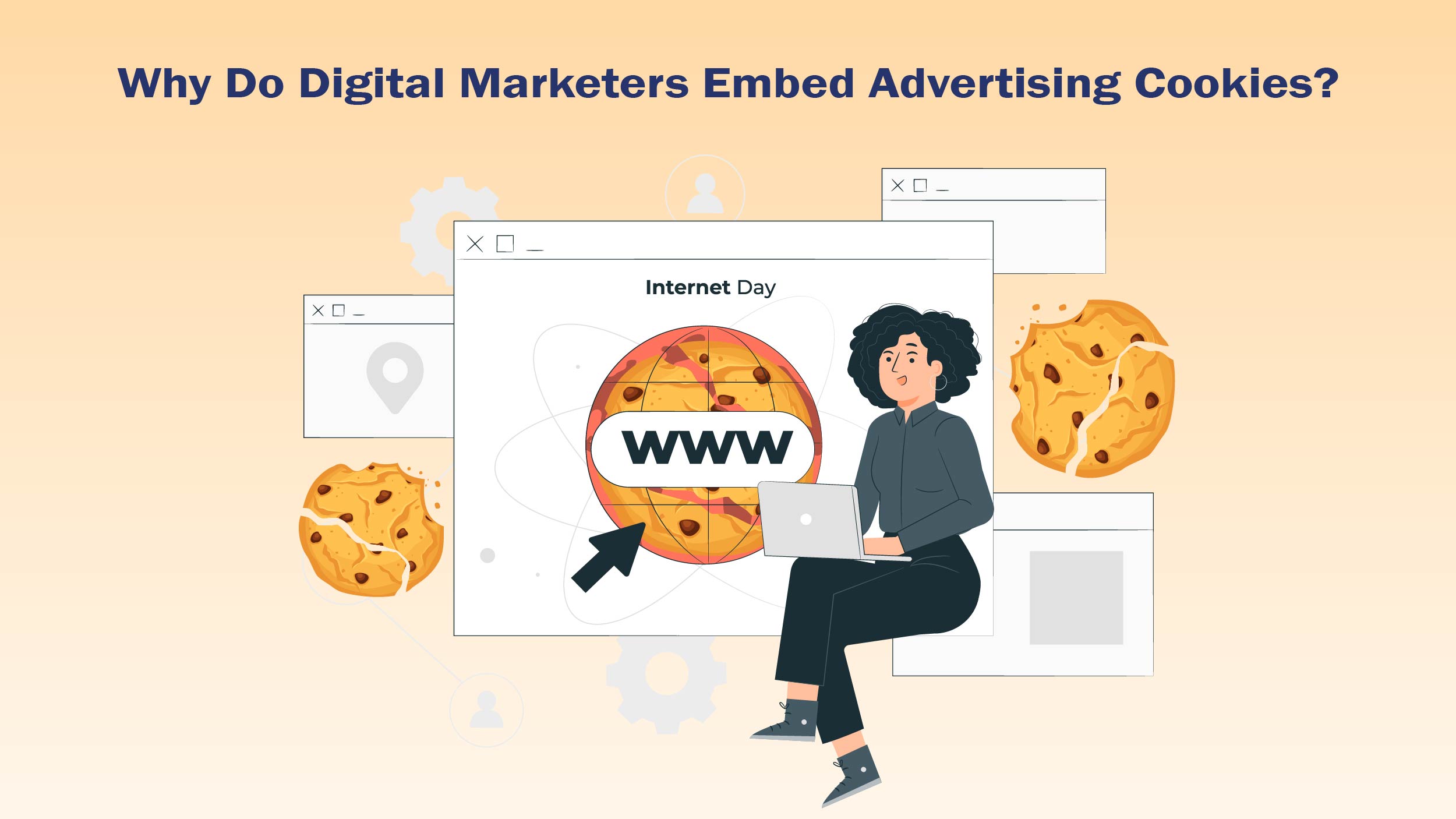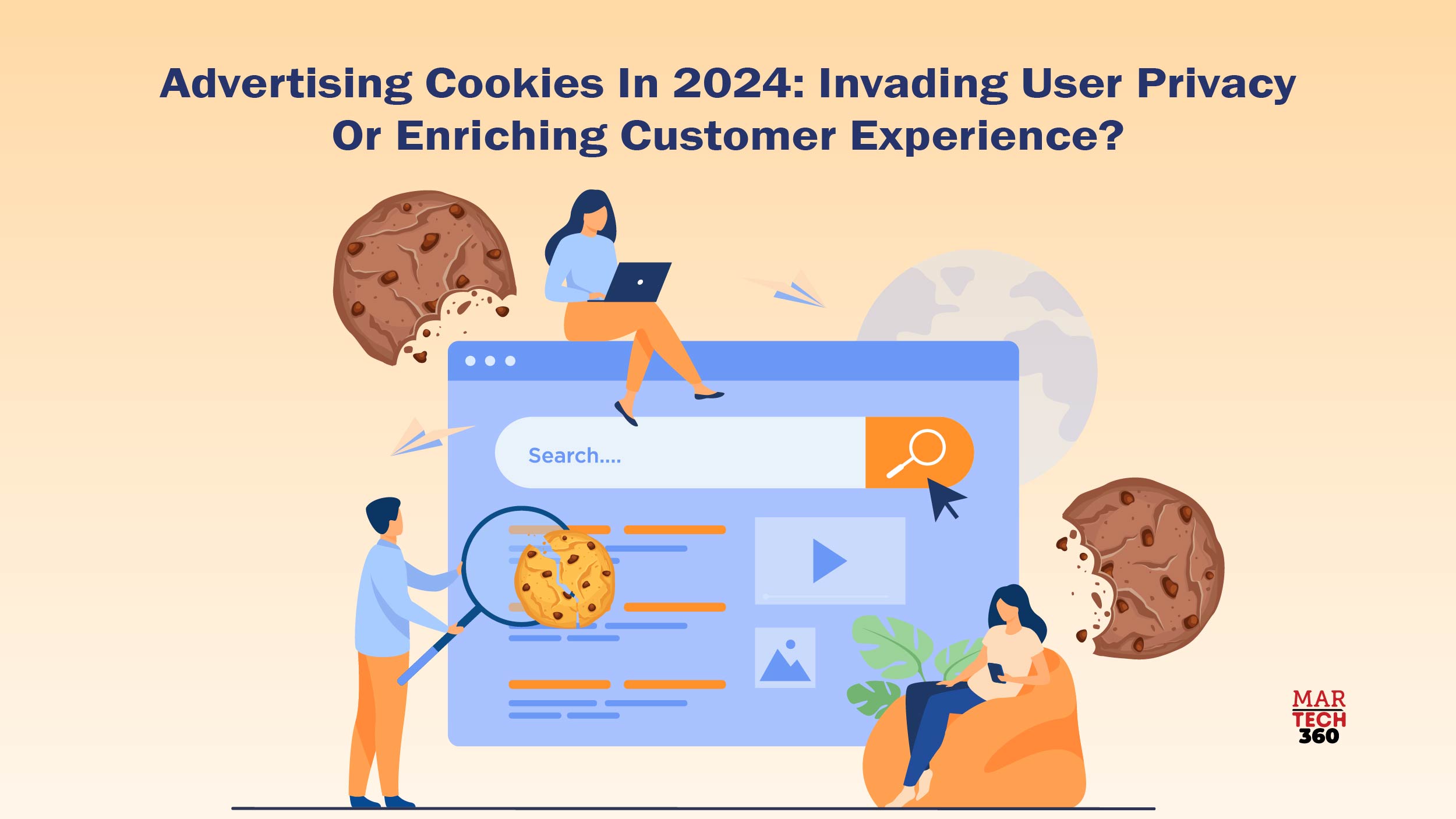Digital marketing has benefited greatly from the use of advertising cookies, which have helped the sector flourish. They are essential for marketers to develop and assess campaign effectiveness. There is discussion regarding these cookies’ intrusiveness, though, since users might find it uncomfortable to have their activities tracked without their knowledge or consent.
Having a solid understanding of advertising cookies—including their uses, variations, and prospects—can aid companies in creating long-term digital marketing plans.
With 2024 here privacy concerns have become the most vital aspect of web surfing. How has this picture changed so drastically? Will advertising cookies still stay relevant? Let’s find out.
What is an Advertising Cookie?
Advertising cookies have been instrumental in digital marketing for an extended period, allowing advertisers to accurately profile their target customers. An advertising cookie is a small piece of data that tracks user behavior on a specific website. Despite its simplicity, when properly utilized, this information can encompass details such as login information, visited pages, duration of stay, device information, time zone, language preferences, location, and operating system.
This data is crucial for enhancing a website’s digital marketing strategies, as it significantly improves the likelihood of campaign success by customizing content to better resonate with the target audience.
Why Do Digital Marketers Embed Advertising Cookies?
 To offer a simple explanation about why digital marketers embed advertising cookies is for them to improve their ad targeting by profiling their primary target audience to improve their experience over the internet. This can be done to understand how the user surfs the net and to develop an individual, yet specific advertising routine for them.
To offer a simple explanation about why digital marketers embed advertising cookies is for them to improve their ad targeting by profiling their primary target audience to improve their experience over the internet. This can be done to understand how the user surfs the net and to develop an individual, yet specific advertising routine for them.
Previously, when customers were getting used to the digital landscape as it was introduced, cookies and advertising went hand-in-hand to provide an improved customer experience to the users browsing the websites. These were mainly twofold:
First-party cookies
Cookies created by a website that an individual visits directly are known as first-party cookies. These aid in gaining more control over the data of customers, the span of these advertising cookies is longer as they do not get automatically blocked, and also personalized branded domains are curated just for you. For instance, whenever you visit a website, it creates a cookie for each site and saves it for your future reference.
Third-party cookies
Third-party cookies are created by third parties and not the website itself. These types of cookies are a common part of digital marketing but are currently facing ad blockers of these third-party agents due to invasion of privacy. For instance, when you visit a particular website, after creating the first-party cookie, it tries to look into your browsing patterns to understand your needs and cater to them accordingly. These are classified as third-party cookies and not cookies formed by the website itself.
Also Read: What is Content Engagement? A Comprehensive Guide with Proven Strategies
Has The Relationship Between Cookies And Advertising Changed?
According to a McKinsey survey in 2022, near about 41% of consumers stated that they do not agree with advertisers tracking cookies since privacy protection stands on a pedestal while surfing various websites on the internet. This love-hate relationship between advertisers and cookie advertising has gone back and forth for a long time.
The integration of cookies in advertising originated from users’ increasing expectations for an improved customer experience during their online browsing activities. First-party cookies mainly track user engagement, allowing customers to fully consent to their choices of accepting or declining cookies. In contrast, second-party cookies are utilized by advertisers to improve sales.
A type of cookie gaining traction in 2024’s marketing landscape is targeting cookies. Targeting cookies are a part of third-party cookies that are set by either the brand’s website or their advertising partners. As the demand for user privacy has become a major factor in cookie advertising, targeting cookies does not directly store the personal information of users and can be disabled.
Targeting cookies and advertising cookies, hence, build specific user profiles to statistically analyze how advertisements on these websites are performing. These could be present on various platforms including social media to directly track users and provide catered advertisements to them that they would like to see. This data is usually based on previous websites visited and finding their ads on unrelated or new websites.
How Is Cookie Based Advertising Different From Marketing Without Cookies?
 Let’s first breakdown what is the result of selecting either one of these options. If you accept these cookies, they will assist in giving you the best possible user experience the website has to offer.
Let’s first breakdown what is the result of selecting either one of these options. If you accept these cookies, they will assist in giving you the best possible user experience the website has to offer.
For instance, while online shopping, accepting these cookies would help in browsing items as per your selection and your shopping cart. This would give suggestions based on your preferences or the filters you prefer. When you see these appear on your screen again as an advertisement, they are known as cookie ads.
Cookie ads cater to your browsing and showcase advertisements as per your interests and preferences. However, if you choose to decline these cookies, you can browse normally at your convenience and will not have to see any cookie-based ads. This is beneficial when you are stress-shopping online and do not wish to make a purchase but rather wish to browse casually.
For strategic advertising without cookies, marketers can resort to various cookieless marketing strategies including app and website-based tracking through Google Analytics, gathering first-party data to customize data as per different users, investing in market research to collect the right data from customers, and also focusing on personalization of data.
Is The Digital Landscape Transforming With Changing Third-Party Cookie Trends In 2024?
Data has previously been driven by the cookies for brands to provide innovative marketing “treats” to their users and make their experience better. As we shift and transform into 2024, the matter of fact remains that your customers want a more user-friendly digital ecosystem without invading their privacy.
There has been a substantial decrease in the usage of third-party cookies ever since marketers shifted their focus toward prioritizing the privacy of their customers. On the other hand, first-party cookie data gains momentum for effective advertising by following the user-friendly and privacy-first approach. The transformation of the digital landscape has compelled advertisers to push more of their marketing efforts into contextual advertising instead of gathering data from third-party sources.
With this, first-party data is set to improve over time with better advancements in catering to customer experience and needs. First-party cookies would continue to be a core part of the marketing strategy formed by brands who want to connect with their customers in a better way without completely declining the usage of advertising cookies.
Is the Future Of Advertising Cookies “Crumbling”?
The cookie game is expected to crumble in the next few months as the major provider of cookies on Google Chrome is all set to end support for all third-party cookies. This is expected to completely change the digital landscape as first-party cookies are emerging as a better opportunity for marketers to gather customer information.
Customers no longer wish to accept all cookies if they do not agree with certain aspects of the agreement the website presents. Trailing around the same topic, customers should have the choice to choose which cookies they would like to approve of and which cookies to decline (throw away if they don’t like them).
From the perspective of companies, they should ensure that the consenting visitors on their websites have greater control over the data that is being collected by these marketers. With the same, customers would put more trust in the companies constantly gathering data and not just in the name of enriching user experience.
To ensure the best experience with cookies, enable them only for websites you genuinely like to browse and let them track you as per your preferences. This would cater to making your user experience better, without you feeling uncomfortable about sharing information you didn’t want to in the first place.


Comments are closed.